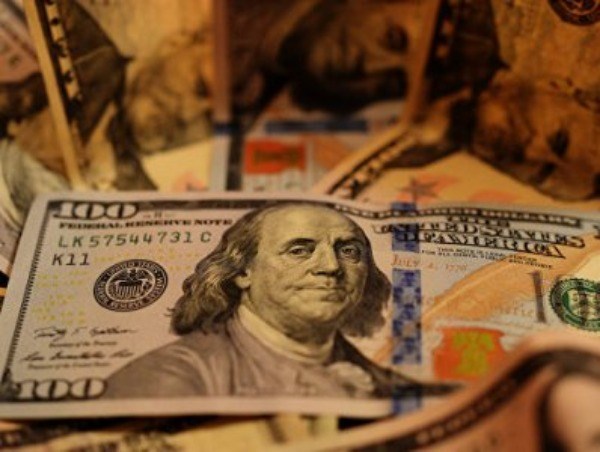Russia decides to dump dollar reserves amid fear of new U.S. sanctions
The Russian Ministry of Finance has decided to radically change the structure of the National Wealth Fund (NWF), the head of the ministry Anton Siluanov said at the St. Petersburg International Economic Forum.
According to him, the fund will completely get rid of investments in U.S. dollars, reduce investments in the British pound, replacing them with the euro, Chinese yuan and gold.
These financial operations will be carried out by the Russian Central Bank as soon as possible. It will be "the next month," Siluanov said.
Andrei Belousov, the First Deputy Prime Minister and former assistant to the Russian president for economics, explained: "This is a sensible decision, made also under threats of sanctions," which was voiced by the U.S. leadership. According to Belousov, the decision was made by Russia's top leadership. It "honestly will not affect the ruble exchange rate," the Deputy Prime Minister said.
As of May 1, the size of the NWF, where budget revenues are accumulated, amounted to 13.8 trillion rubles, or 185.9 billion dollars.
About two-thirds of this amount are the so-called liquid assets, $116.4 billion in foreign currency are held in the accounts of the Central Bank and are part of the Russia’s foreign currency reserves.
These funds are in $39.84 billion U.S. dollars (35%), 34.69 billion euros (35%), 8.55 billion pounds (10%), 600.3 billion yen (5%) and 110.565 billion Chinese yuan (15%).
According to Siluanov, the share of the British pound will be reduced to 5%, the share of the euro will be increased to 40%, the share of the Chinese yuan will grow to 30%, and another 20%, the Russian Finance Ministry will invest in gold.
In fact, the Kremlin will replace half of the investment in pounds with the European currency, and dollar reserves will be converted into yuan and gold.
The purchase of physical bullion for the National Wealth Fund is not planned. The money will be invested in a conditional "metal account" opened in the Central Bank, explained the Ministry of Finance in late May.
Back in 2019, Siluanov acknowledged that investments in gold have flaws. "Assets secured by precious metals are less liquid," he explained. In other words, gold is difficult to sell quickly in a significant amount, if the government urgently needs a currency, for example, to stabilize the ruble, or emergency injections into the budget and economy.
The position of the Russian Finance Ministry changed after Donald Trump, who was loyal to Moscow, was defeated in the election, and the administration changed in the United States.
The exit from dollar assets, which the Russian Central Bank started three years ago, shows that the Russian authorities are seriously afraid of the seizure of the foreign currency reserves, Sergey Dubinin, who headed the Russian Central Bank in 1995-98, said in an interview with Bloomberg in 2018.
Russia, he said, learned a lesson from the situation with Iran, whose reserves were frozen after the imposition of tough U.S. sanctions.
Russian President Vladimir Putin has long denounced the "monopoly status of the dollar," which he said allows the U.S. to "parasitize" on the global economy and "live beyond its means." After his inauguration for a fourth term, Putin said a "break" from the dollar was necessary to strengthen Russia's "economic sovereignty."
In 2019, Putin predicted the collapse of the dollar and American politics. Sanctions banning dollar payments, such as those imposed on Iran, North Korea and Venezuela, Putin said, "undermine confidence in the dollar" and deprive it of its former status.
“They are sawing off the branch they are sitting on. And soon they will crash to the ground," Putin said.
Fear of losing American assets has been in the minds of Russia's top leadership since 2014.
As Reuters found out from sources in the Fed and the U.S. Treasury, in the days after the annexation of Crimea and the introduction of the first package of personal sanctions, which affected only a few Russian officials and people from Putin's entourage, the Russian central bank withdrew from the U.S. 115 billion dollars - the amount that at that time was equivalent to 23% of the Russian gold and foreign currency reserves.
"Despite the Kremlin's official rhetoric, the Fed and the Treasury department have concluded that Russia is afraid that its assets will be frozen in the United States," a former Fed official told Reuters.
It should be noted that in case of further sanctions, it is the Russian National Wealth Fund that can become a target of Western financial authorities, unlike the Russian Central Bank, which, according to the law, is not responsible for the obligations of the state and the government.
"Undoubtedly, the decision is caused by the desire to ensure the preservation of the sovereign fund in light of the high sanction risks following the recent tightening of U.S. sanctions against the primary ruble national debt and the continuing threats to the operations of the government/state banks and state-owned companies in U.S. dollars," said Dmitry Polevoy, Director of Investments at Loko-Invest.
But by reducing geopolitical risks, the Russian Ministry of Finance increases market risks. The yuan will have to be bought at the rate which is the highest in three years and gold prices are also at historical highs.
"If, in the case of the euro, the Ministry of Finance may well win, given the expectations of the growth of the euro against the dollar, in the case of the yuan and gold, things may not turn out so good," warns Polevoy. The Chinese authorities are trying to stop the growth of the yuan exchange rate, while gold can be extremely volatile and depends on global inflation and interest rates.
